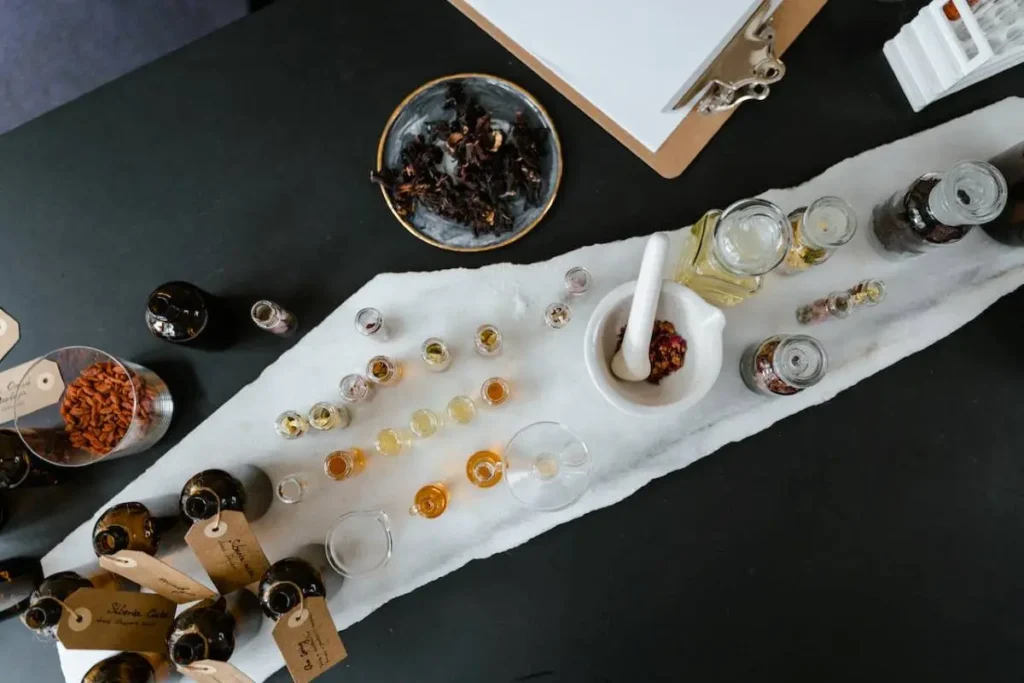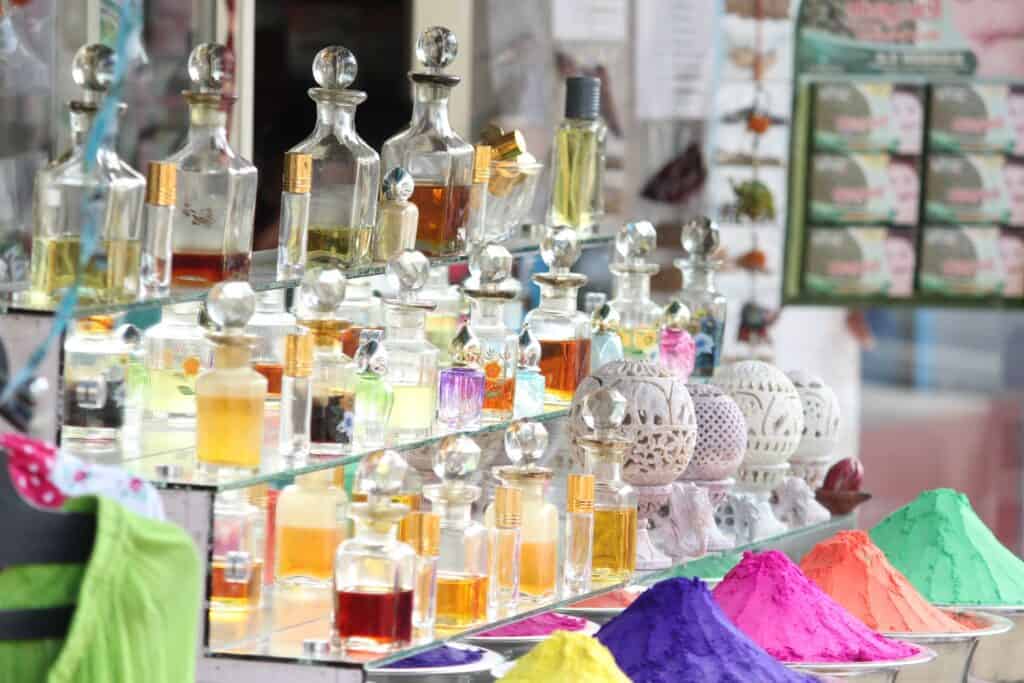A lot of perfume wearers don’t understand why some people never wear perfumes, and those who don’t wear them don’t understand why you wear perfumes at all. While I don’t feel my get-up is complete without a few sprays of scent, some of my friends see it as something that only is needed when you are going to a wedding. So perfumes aren’t a necessity – not like clothes, but more like fashion. So, what exactly is perfume?
Fine perfumes, or fine fragrances, are officially classified under the cosmetics category, but they can also be seen as an accessory or a luxury product. Today, as so many master perfumers work their creativity behind each release, perfume can also be called a form of art.

Let’s take a look at the classification of perfumes based on 5 different factors.
Perfume Classification Based On Families
Fragrance families can be confusing because they are not always a ‘clear distinction’ from one another. It’s the same as the colour of a rainbow, which is why odour is often compared with colours. Having said that classification based on fragrance families was created for customers to understand better and have a guide as they test and buy fragrance.
Classification based on families arose with the necessity or concept of trying to define odours, but grouping and classifying it became more prominent in the late 20th century.
German company Haarmann & Reimer, now merged with Dragoco, and known as Symrise, was the first company to provide a classification of perfumes based on perfume families. Many other players then followed this in the market by coming up with their own classifications.
One of the earliest known classifications published by S.F.P Société Française des Parfumeurs in 1984, classified perfumes into 5 bif olfactory families – floral, chypre, fougere, amber, and leather, but the 1990 classification of perfumes added two more families namely Hesperides and Woods. Both of these classifications’ families have their own sub-families too.
Since then, classifications based on families have been updated many times.
Perfume Families And Their Subfamilies
| Families | Sub-families |
|---|---|
| Floral | Single floral/ Soliflores Amber Floral Soft Floral |
| Chypre | Animalic Chypres Floral Chypres Fruity Chypres Green Chypres Woody Chypres Fresh Chypres |
| Fougère | Citrus Woody Leather |
| Amber | Soft Amber Woody Amber |
| Leather | Floral Leather Amber Leather Woody Leather |
| Citrus | Citrus Floral Citrus Woody Citrus Oriental |
| Woods | Woody Oriental Woody Leather Woody Chypre Woody Floral |
Based On Concentration
Perfumes are classified based on concentration, and often it affects the choice of perfume you want to buy. It is generally known that few Asian consumers go for lower concentrations while consumers in the United States go for stronger concentrations.
The level of concentration of perfume is based on traditions or use. The concentration of perfume also defines how long the perfume lasts on the skin. In the list below we have the most known concentrations, where attar at last is the longest-lasting perfume concentrate.
- Eau fraiche
- Eau de cologne
- Eau de toilette
- Eau de parfum
- Parfum
- Extrait de parfum
- Attar
Based On Formulation
There are natural perfumes and there are synthetic perfumes.
Natural perfumes are made from natural ingredients extracted from natural sources like plants or animals. But the fragrance industry has found different other ways to create perfumes, by synthetic means.
Chanel No. 5 is the first perfume that was created with synthetic ingredients, and Ernest Beaux, the perfumer behind this scent, said that modern-day perfumery will have to rely on chemists for creating new fragrances.
A lot of perfumes we have today successfully use synthetic ingredients. While it is often believed that natural perfumes are better and safer than synthetic, it is hardly the reason because one of the reasons why synthetic ingredients are created is so that they can provide us with safer fragrances than natural fragrances that plants create to fight against predators. In the laboratory, the same can be created for safety in use and after use.
While this classification doesn’t directly affect many consumers’ choices while buying, many do tend to stick to natural-based perfumes and not want to spend money on mass-market synthetic perfumes.
Based On Production Scale, Distribution Channel, Style, Focus Or Price
Perfumes can also be categorised based on their production scale, distribution channel, style, focus or price. Most people wear designer perfumes, which are produced to cater to all tastes and interests, while indie and niche focuses more on the product or their interest in the art of perfumer. This categorisation consists:
- Designer Fragrances(mass market)
- Niche Fragrances
- Indie fragrances
- Celebrity fragrances
- Cheapies
- Dupes/Clones
Based On Gender
The common ‘florals for women, and woods for men’ are hardly valuable to modern-day fragrance enthusiasts. Because it is mostly marketing and commercialisation, and an idea that is based on fashion and habit.
Many fragrance brands, and especially niche houses don’t label their fragrance as masculine and feminine, and they let their consumers decide that for themselves. Because fragrance is also some form of art
While women’s perfumes do tend to have more floral notes than men’s perfumes, there’s no reason why a man wouldn’t be excited to wear a floral fragrance every now and then.
Here’s the classification based on gender:
- Feminine/Women’s/Pour Femme
- Masculine/Men’s/Pour Homme
- Unisex/Genderless
Takeaway
Did you know that centuries ago, perfumes were used as a medium between the physical realm and the spiritual realm? In fact, in many cultures, including mine, we still use incense sticks during religious rites and rituals. The aim is to purify, communicate and transport the soul to the spiritual realm.


